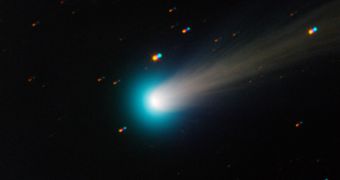Scientific animators at the NASA Goddard Space Flight Center (GSFC), in Greenbelt, Maryland, have just released this new animation describing how comets can be destroyed by the Sun ever before they reach areas located in close proximity to the star.
The video was released ahead of a planned meet-up between the Sun and Comet ISON (C/2012 S1). The space rock is scheduled to reach its perihelion, the point of closest approach to the star, tomorrow, on November 28. The animation shows how comets usually start being affected by solar radiation when they reach the orbit of Mars.
Most comets are thought to originate from a region called the Oort Cloud, located way beyond the Kuiper Belt that contains Pluto. Until they reach the orbit of Mars, and enter the inner solar system, they are not very affected by solar radiation. Once they get closer though, they begin to boil from the inside.
This continues until the object swings past the Sun and back out into the solar system, if it is able to do that. For smaller comets, a combination of solar pressure, intense radiation and extreme heat is enough to destroy them. Astronomers will monitor Comet ISON tomorrow to see if it manages to escape the Sun's destructive tug.

 14 DAY TRIAL //
14 DAY TRIAL //